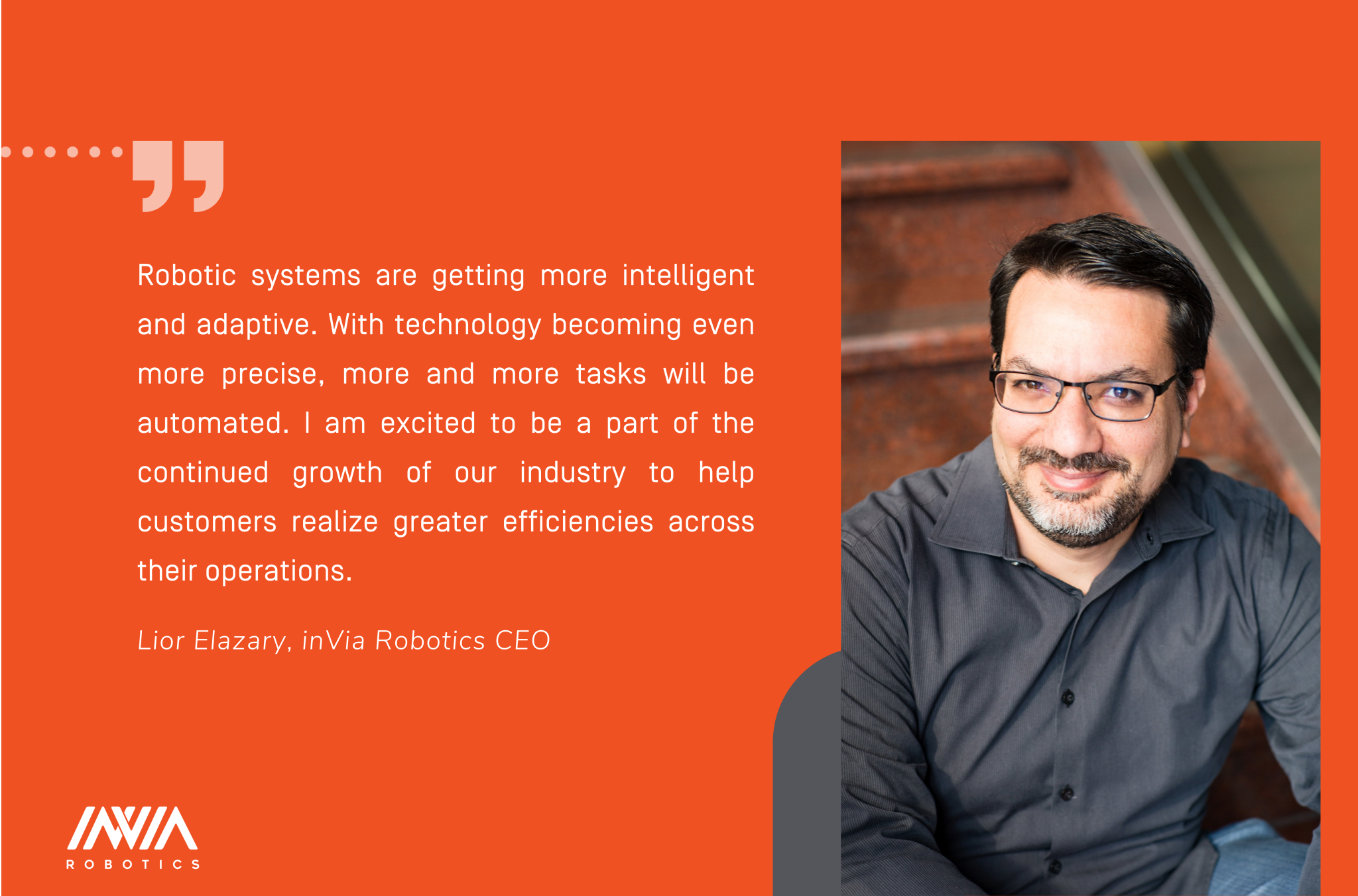
Message from inVia Robotics CEO, Lior Elazary
2021 has seen historic disruptions to the global supply chain. The impact of COVID-19 on logistics and transportation and a strong bounce back in consumer demand have created a perfect storm for supply chain bottlenecks. It’s been particularly challenging for eCommerce retailers and 3PLs, who had to fulfill many more orders while struggling to attract and retain warehouse workers. At the same time, Just-in-Time inventories were replaced by Just-in-Case strategies in the face of record import volumes causing shipping delays and product shortages.
These conditions have put pressure on trade across the globe, with many experts calling for automation solutions to help improve the failing supply chain. As we come to the end of this historic year, I’d like to reflect on what we’ve learned and share my thoughts on how this new paradigm will continue to affect eCommerce fulfillment:
1) Warehouse automation adoption will accelerate to keep up with business needs and consumer demand
With consumers expecting faster and cheaper delivery, companies have been looking for more efficient ways to streamline operations to meet demand. This was the case pre-pandemic; however, recent supply chain challenges have added a sense of urgency. In the past, companies could keep pace with the demand curve by hiring additional workers during peak seasons. Today, that demand has become a tsunami, and access to additional labor has become more challenging.
Companies have been eager to adopt intelligent technologies to help meet these challenges. Smaller eCommerce brands especially feel the pressure to deliver quickly and on time to keep up with larger retailers. As a result, more and more 3PLs who handle their fulfillment needs are turning to automation solutions. inVia nearly doubled the number of deployments of its AI and robotics systems in 2021. Our team has also increased staffing to keep up with what we expect will be even stronger demand in 2022.
2) Automation solutions will become even more adaptive, efficient and precise
Warehousing automation technology is still maturing. As the technology evolves, AI and robotics systems are being tested and continuously improved. This ensures the highest performance while still meshing with current operational processes.
A perfect example is the inVia PickerWall product, which maximizes the order picking efficiency by eliminating dependencies between robots and people. Our proprietary inVia SmartPath algorithm directs robots to efficiently build a dynamic putwall with each day’s orders, allowing people to sort orders from the wall in bursts. We deployed it to further enhance the relationship between people and technology. Automation requires seamless integration of warehousing systems but also a symbiotic collaboration between robots and people. Instead of demanding that employees work robotically to keep up with robots, we created a workflow where employees can work during set time frames, while the robots keep working nonstop.
At inVia, we are committed to continuous improvement of each of the tasks we automate. For example, we’ve made our robots picking speeds 35% faster this year. With our RaaS model, our customers get these improvements automatically through system upgrades as part of their subscription.
3) Robotics will expand into every facet of warehouse operations
Robotic systems are getting more intelligent and adaptive. With technology becoming even more precise, more and more tasks will be automated. As a result, automation will expand into all functions of the eCommerce fulfillment process as the industry continues to realize its full potential.
We see this trend in the evolution of the inVia systems. We started with an area that was in greatest need of automation: order picking. It’s repetitive and much more practical for robots than people. We soon expanded to cycle counting, replenishment, putbacks and other areas. The possibilities for improvements and new applications are endless. In our society, we have created a streamlined process where you can press a button and have a package delivered to your doorstep. Technology applications will enable further refinements of this every year.
4) Macro-level interoperability is essential to just-in-time fulfillment of eCommerce orders
System integrations are central to every aspect of the supply chain. The integration of warehouse automation systems with platforms such as WMSs and LMSs is especially important now that the logistics industry struggles with a lack of transparency.
While these are important topics, there is a need for even greater interoperability across warehouse processes and systems. At inVia, we’re solving a more macro-level problem of how to ensure that goods flow seamlessly across the warehouse, as they’re handled by people, robots, and other equipment. There is a famous computer science problem called the Job Shop Problem:
How do you make sure that all tasks that are being performed in different parts of the warehouse interoperate from a timing perspective to avoid stoppages or idle time? You need an orchestrating system before you can effectively address interoperability at a micro or individual machine level. Once orchestration is in place, the individual integrations will be easier – and add greater value.
These are exciting times for warehouse automation. We are still very much in the early stages of technology applications, and the advances in automation for the eCommerce industry will become more apparent and widespread in the near future. I am excited to actively contribute to the continued growth of our industry to help our customers realize greater efficiencies across their operations.